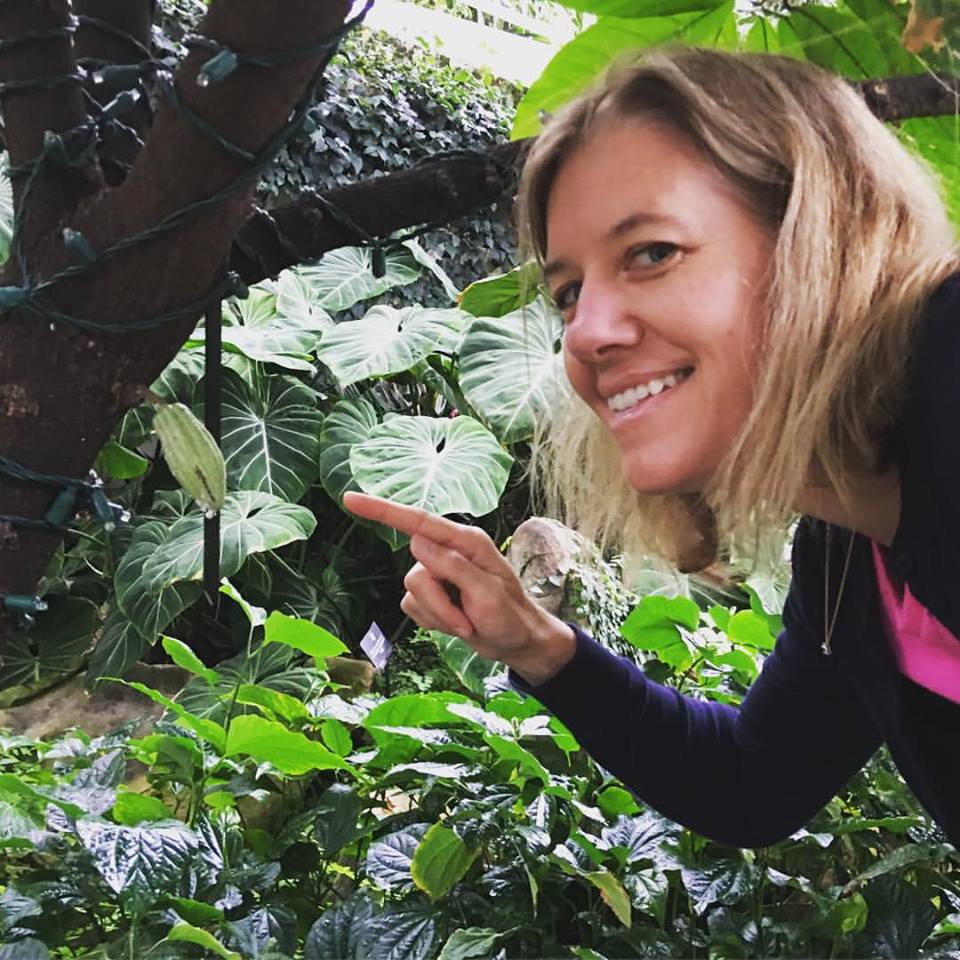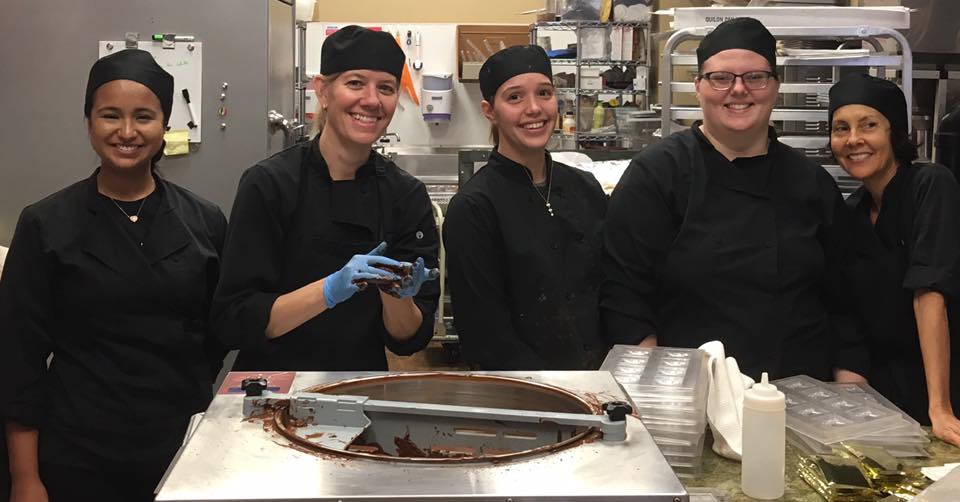Denise Castronovo’s story reveals that the path to making world-class chocolate might not be what you’re expecting. So how did the only US woman to ever be honored at the International Chocolate Awards World Finals get her start?
The Unexpected Geography of Chocolate
Denise Castronovo grew up in Walpole, Massachusetts. When she was young, she vividly recalls the experience of tasting good chocolate.
She shares, “My aunt moved to Switzerland when she was young and she would bring these spectacular chocolate bars back to the US that weren’t otherwise available to us at the time. When I tasted that Swiss chocolate, I understood immediately why it was different from the commercial varieties, and how special and delicious it was. I loved dark chocolate as a kid and grew into an appreciation of fine foods. My first job was working at a brick oven pizzeria, and I was the only woman making pizzas back there by the oven with the guys. That job taught me a lot about flavors.”
But to return to the gourmet foods industry with a bang, Castronovo long had to leave it, pursuing work that would only marry with chocolate making years down the road.
“I went to college for environmental studies, and then got my masters in economics. I was really interested in studying the economic reasons behind protecting the environment because I felt that making a successful economic case for preservation would provide the opportunity for the greatest potential benefit. I went on to start my PhD in ecology at the University of Georgia but I didn’t finish. I decided instead of becoming a professor, I’d use the skills I’d gained and head into the workforce. I spent 15 years in the field of mapping technology and spatial analysis, part of which included returning to Boston and running the Geographic Information Center at Tufts University.”
“Of course, Boston has a lot of snow and cold during the winter months. My husband and I longed to head somewhere warm, and eventually decided to make a new start in Stuart, Florida. At first, I was working for myself as a Geographic Information consultant but was curious about other things I might do.”
“I was very interested in superfoods and was watching the market as craft chocolates were just getting their start. What intrigued me the most was that chocolate could have so many flavor notes and different flavor profiles based on origin. This felt different to me, that it was where the cacao comes from as much as the ingredients that go into it that produce flavor. There are so many types of cocoa that exist . . . the more we study genetics, the more we realize there is far more diversity than ever imagined. I wanted to see what was out there.”
“The wine varietals have received a lot of focus to great success, but I started making chocolate focused on origin because chocolate hadn’t received that kind of attention. That geographical component, along with ecology and the economics of place, and my interest in great foods—all of it clicked together. Why not introduce a new kind of chocolate and help others and the environment at the same time? It seemed like a way to try to do something to help fix a broken system.”
Denise Castronovo points to some cacao at The University of Georgia State Botanical Garden's tropical rainforest exhibit.
Much More than Lip Service to Sustainability
It is this very particular understanding of geography, economics, environment, and taste that enable Castronovo to understand sustainability (and chocolate) in all of its varied aspects.
“I set very high standards for the beans I use, making sure that they enable protection of the rainforest and indigenous cultures. The best way to nurture conservation is to enhance the market for product that depends on the forest being used in the way that it already naturally stands. So none of my beans come from cocoa plantations where they cut down the forest to create the plantation. Everything I say yes to either exists naturally in the wild already or is from small family farms where cocoa just happens to be one of the things they grow.”
“We partner closely with people who work on the ground in these countries of origin, people who share our values. They give a lot of technical advice to the farmers and basically become their export partners. For example, they set up fermentation facilities that are centralized, buying from farmers and bringing to one facility. This really manages the quality of the beans. Without it, farmers would ferment the beans under banana leaves and the quality varied, so you couldn’t rely on the taste over and over. Without expectations on quality, it is hard to create consistent taste, so your product loses its market and you can’t sustain the product, and therefore the farmers can no longer sell. It’s all a web of connections. The big picture is so important. When someone says they have beans from Honduras, Venezuela, Colombia, etc., I want to know everything about the beans at every stage before I agree.”
“We are part of our local chapter of the Slow Food movement which is designed to protect the quality and variety of foods. I remain committed to that value in all I do.”
Heirloom Cacao Receives Accolades
Since many Castronovo Chocolate bars are made from heirloom strains of cacao believed to be among the original cacao strains, found deep in the jungle, it’s no wonder that they taste like something most of us have never had before.
And they’ve been widely recognized for their unique flavors. Since making its start in 2013, Castronovo bars have been celebrated with prestigious awards from the International Chocolate Awards World Finals, The Academy of Chocolate Awards in London, and the Good Food Awards for fine flavor, direct trade, and their sustainability mission.
All of this is done from a 700 square foot space with one oven for roasting and two stone grinders. Each work day, all the focus is on one type of bar at a time.
“I keep it very simple with the processing. I’m into the end product, not the equipment. I don’t have to do anything too complicated to get flavor and quality I want—really I just have to not overwork it.”
Amazonas 72%, Honduras Dark Milk 60% with Fleur de Sel, Sierra Nevada Colombia Dark 72%, and Sierra Nevada Colombia Dark Milk offer hints of the geography of which they were born. And then there’s the Savory Pantry staff’s favorite white chocolate bar ever . . . Castronovo’s White Chocolate with Lemon Oil & Sea Salt . . . silky white chocolate punctuated by zesty lemon and just the right crunch of salt.
That brought me to the question . . . is white chocolate “chocolate”? Ends up the answer is “sometimes.”
Castronovo explains, “Ours is. It is made from pure organic cocoa butter and only cocoa butter. A lot of commercial brands use coconut palm oil or other hydrogenated oils and call it white chocolate. When you press a cocoa bean, you get oils (cocoa butter) and cocoa solids (used to make cocoa powder, with the fat pressed out). Chocolate has the cocoa solids and the cocoa butter. Flavanoid antioxidants are also present in true white chocolate in addition to healthy saturated fats.”
Re-Seeing Chocolate and Repairing a Broken System
“The biggest thing I like to educate people about is to see chocolate in a new light. It’s been a broken system in terms of the way farmers are being paid, which is why you can get chocolate so cheaply from the supermarket shelves. It’s digging the grave of chocolate because this doesn’t result in sustainability for the product as a whole or for the environment.”
“So when you look at the price, think of this as a fine food, not a candy. This is like sipping wine versus gulping. This is more satisfying, more about appreciation and savoring. I love it when customers talk about that long flavor of chocolate that lingers in their mouths, and that they’re still enjoying 20 minutes later. In this light, $12 for a bar that is savored over days doesn’t seem so bad because you understand everything all along the way that went into each bite. Our best customers are nibblers!”
Ready to nibble on every bar you’ve read about in this post? We’ve got a 5-Bar gift assortment waiting for you.
The team in Castronovo Chocolate's Stuart, Florida, production space.





